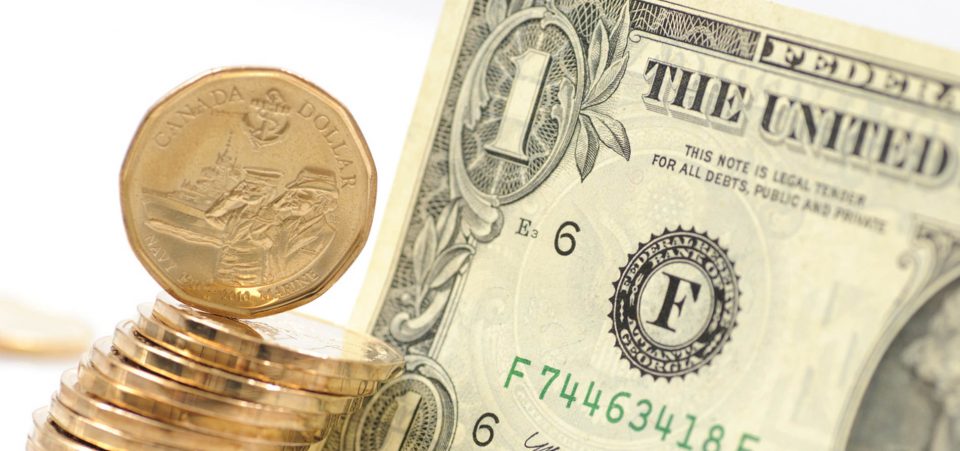USD to CAD in 2017 Should Continue to Favor U.S. Dollar
The USD to CAD in 2017 appears to be heading in a bullish direction for the Canadian dollar. It wasn’t supposed to be this way. The U.S. Federal Reserve has raised interest rates. The Fed also confirmed that there would be at least two more rate hikes in 2017.
But the momentum for the USD to CAD in 2017 could easily return to be in favor of the U.S. Greenback. It wouldn’t take long for that shift to happen. The Canadian dollar has been rising largely in expectation of higher oil prices. Housing starts, which were stronger than expected, moreover, have sustained optimism in the Canadian economy. (Source: “FxWirePro: USD/CAD outlook weaker on renewed downside pressure,” EconoTimes, January 10, 2017.)
The USD to CAD cannot move sustainably in favor of the Canadian dollar, however, as the markets have implied in the first trading weeks of 2017. Oil price is one of the keys. While many have hailed the Organization of the Petroleum Exporting Countries (OPEC) production cuts, there’s no guarantee that prices will reflect those cuts for at least another year.
Prospect of Higher Oil Prices Is Not Reliable Enough
Surely, there are several geopolitical and even physical disaster risks that could create a “Black Swan”-like oil price hike, as I explained earlier. But inventories are high.
Even if OPEC cuts last—and non-OPEC players comply—prices will not move. Some analysts suggest that at least a year will pass before any meaningful bullish price effect could occur. (Source: “Despite OPEC Production Cut, Another Year of Low Oil Prices Is Likely,” Forbes, January 9, 2017.)
If all OPEC cuts take place as announced, it will be at least a year before sufficient inventory reductions allow prices to move much higher than current levels. If not, lower oil prices will last even longer.
Apart from oil, however, the good news about the Canadian economy rests on precarious ground. Betting long on the Loonie might be rather Looney Tunes in the long term. As in the United States, Canadian retailers appear to have had a dismal holiday season.
Canadian Household Debt Is at Record Levels
Wages have not increased in real terms since the 2008 financial crisis. So, while some expect the Canadian dollar to go as high as US$0.79 (and it could in the very short term), realists would see it closer to US$0.70, if not lower. (Source: “Canadian dollar may go as low as 70 cents US in 2017, experts say,” CBC, November 24, 2016.)
The American Greenback will get further support for U.S. bond rates that are rising. Meanwhile, the heart of the bullish argument for the Canadian dollar relies too much on the price of oil. The latter remains too slick to support a bullish case, and the Bank of Canada cannot risk raising interest rates further.
Demand in China, the fastest growing—and heavily OPEC-dependent—oil importer is slowing. The Chinese economy is headed for another year of decline, and Beijing has even conceded a revised, and lower, GDP expectation of less than 6.5%.
Add to that the continued uncertainty in Europe, with more Brexit-like events in store throughout 2017, and the bullish picture for the Canadian dollar fades faster than Canada geese flying south in the fall.
Therefore, if analysts rely on oil as a predictor of the Canadian dollar’s performance, they might want to be more bearish than bullish. The non-oil evidence for a higher U.S. dollar has more long-term dependability. The U.S. economy is in a positive momentum, and the Federal Reserve could raise its rate again in 2017. Canada cannot afford the same. Even Canadian investors might choose to invest in U.S. bonds, being unfavorable to the Loonie.
It’s true that the Canadian currency benefited from the publication of optimistic economic statistics. This would imply expectations of monetary tightening. But the results of one of North America’s biggest retailers suggest that the Bank of Canada must act with caution. Should it lift interest rates too soon, it would send the entire economy into a tailspin.
Hudson’s Bay Co (TSE:HBC) stock was down four percent on January 9. It hit the lowest level since it resumed trading over four years ago. Hudson’s Bay, Canada’s oldest company, which owns Saks Fifth Avenue, lost 4.3% in a single day.
Hudson’s Bay stock is worth 31% less than on November 26, 2012, when it resumed trading on the Toronto Stock Exchange. The sharp drop reflected worse-than-expected sales throughout its retail empire. It doesn’t bode well for consumer spending in Canada in 2017. A low Canadian dollar, in fact, could be the only way to prop up Canadian industry.






